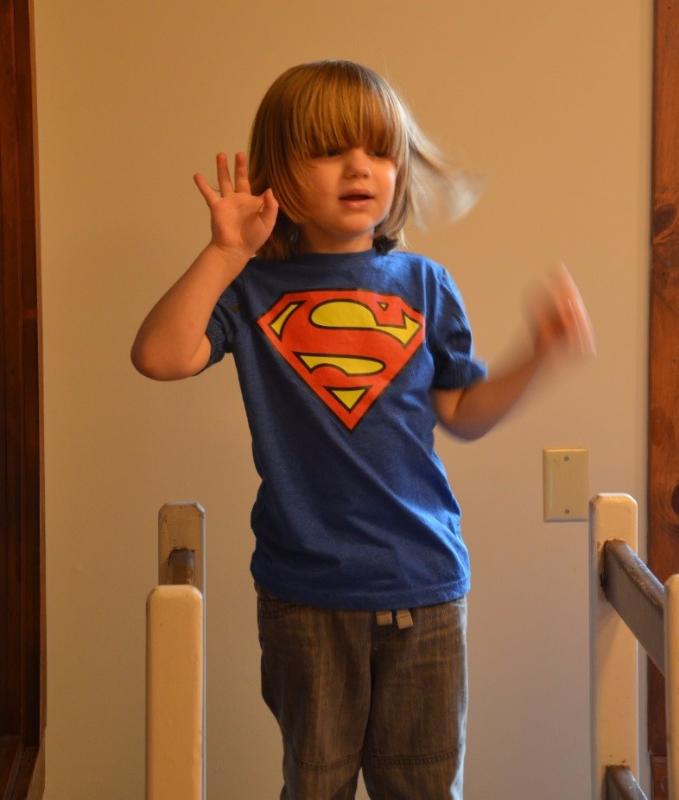
Article by: Camila Titone
Son-Rise Program® Teacher
Senior Son-Rise Program® Child Facilitator
 This morning I was in the Son-Rise Program® playroom, here at the Autism
This morning I was in the Son-Rise Program® playroom, here at the AutismTreatment Center of America® with our very sweet five year old friend. He had very fine, long, blonde hair and he loved to move his head around and watch his own hair hit his face. He also moved his fingers in front of his face watching this most perfect finger choreography in fascination.
I gathered that he loved watching things move. This was a very important discovery for me!!! This is my very special friend and whatever is important to him, is important to me! And so it was, that the two of us moved our hair and our fingers around the room as I joined him in his actions.
Until he became still, his hands became quiet and his eyes were actually looking at ME… We both smiled – we both knew that what we had been doing together had great importance!
Now that I had my friend’s attention, I invited him into my world! Knowing now what he likes to do, I danced around the room trying to match his fingers choreography. I got hold of some scarves from the shelf that could aid me to continue with my choreography of movement, color and fun ... It was certainly a lot of fun!!! Then I noticed my friend was still there with me!!! He had carried on watching me. I paused, he looked at me and said “up” and so I continued moving the scarves … Hooray! He was not only watching me now, he also spoke and told me what he wanted!!!
_________________________________________________________________________
In The Son-Rise Program we follow what our children are motivated for because this is how we connect – by being the doorway into their world.
Motivation is also the key to all social interactions…
Motivation is also the key to all social interactions…
So here are some questions for you:
- Do you want your child to answer your questions?
- Do you want your child to look at you?
- Do you want your child to to say that he/she loves you?
- Do you want your child to play to play a game with you?
- Do you want your child to engage more with you?
______________________________________________________________________
Here are some steps that will help you discover some of your child’s motivations and ways to create more social interactions with your child with Autism:
1. Join them in their ism (stim) and show them that you are predictable and easy to be with. Be curious and interested about THEIR WORLD.
2. Be a detective! Observe your child and ask yourself –“what does my child like to do?”, “what gets my child’s attention?” Our children are ALWAYS doing something, even if it seems to you that they are not doing anything…
**Remember, our children are always doing something and that’s important to them. And you want to find out what that is!**
1. As you observe your child and you notice the things your child moves towards or seeks more of, create a list. You are creating a list of what we call your child’s motivations.
2. When you are spending time with your child, there will be times when your child might look at you, talk to you or reach out to you – your child might give you, what we call green lights.
Once you get a green light and your child shows an interest in you, this will be an opportunity for you to offer an activity! Offering activities will create a space to help your child do different things, and learn and grow from it – it’s an opportunity to inspire your child to grow.
_________________________________________________________________________
When we get a green light, we want to offer activities that are around our children’s main areas of interest and motivation (that thing that your child likes to do).
_________________________________________________________________________
When we get a green light, we want to offer activities that are around our children’s main areas of interest and motivation (that thing that your child likes to do).
1. The motivation is your “bait” and by “giving” that to your child, you are creating a stage where the two of you can play together and where your child will be able to engage with you longer (because this is about the thing that he/she LOVES).
2. We all learn more when we are motivated and interested in what we are doing. We all are also more likely to try a little harder if we are enjoying our experience (if we are doing what we like). Using your child’s motivation in an activity will help your child grow and learn more.
So if you want your child to answer that question you ask them, if you want your child to look at you, to tell you they love you, to play with you … remember that it all starts with us embracing THEIR WORLD FIRST, loving what they love (even if it’s a piece of paper, a silly cartoon character, a piece of lint from the floor) – we want to love whatever it is and find the fun in it!
Our children’s motivation is the doorway into their world and the key to all social interactions.

No comments:
Post a Comment